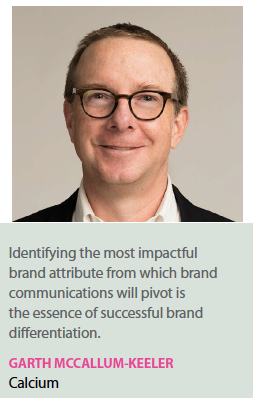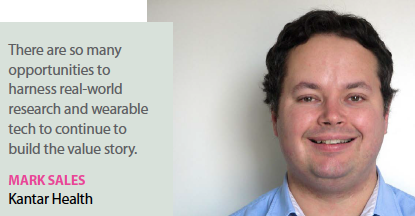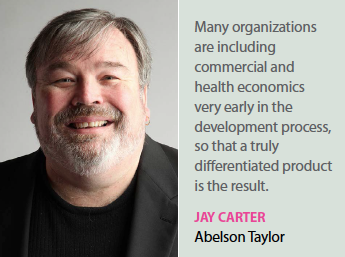According to the global branding and design firm Landor, the process of managing brands — or brand governance — has changed dramatically in recent years. The command-and-control model is obsolete in today’s more agile and dynamic marketplace. In this new world, multiple communities, including employees, partners, third-party influencers, and superfans, are actively encouraged to become involved in a brand’s management.
“The rigid and carefully controlled era of brand management is over," says Lois Jacobs, CEO of Landor in a statement about the report.
 “Agility and adaptability are now top predictors of success, giving way to more audiences participating in how a brand is expressed and experienced. Of course in this environment it remains extremely important to preserve the integrity of the brand and ensure it remains true to its purpose."
“Agility and adaptability are now top predictors of success, giving way to more audiences participating in how a brand is expressed and experienced. Of course in this environment it remains extremely important to preserve the integrity of the brand and ensure it remains true to its purpose."
This new approach to brand management demands a willingness to change, particularly among C-suite executives who will need to rethink their assumptions about brands and shift the directions they give their teams.
Pharma brand managers face an even larger challenge as they attempt to differentiate within a complex marketing ecosystem. One of the toughest jobs is tackling the repositioning of a brand that is not living up to performance expectations.
Garth McCallum-Keeler, managing partner, chief strategic officer, Calcium, says marketers need to proceed with caution when facing this dilemma. They must first determine if the problem is indeed in the positioning or in the strategy.
“Often the problem is that the execution of strategy and tactics against the positioning is flawed, not the positioning itself," he says.
“However, if the brand positioning was ill-constructed or market dynamics have changed in such a way that demand a new place for the brand in the minds of customers, then repositioning is warranted."
Repositioning a brand very much follows the same process and rigor of launch planning, but with the benefit of greater market knowledge and lessons learned. However, since repositioning is often due to brand performance, there will be a throng of interested parties within the company who will want to weigh in on the solution. Mr. McCallum-Keeler says that this situation — positioning by committee — can lead to poor results. One such case could be a highly diluted  statement of purpose for the brand that is not actionable, and another poor outcome could be positioning that is specific to the immediate threat or weakness of the brand but does little to provide a blueprint for longer-term growth.
statement of purpose for the brand that is not actionable, and another poor outcome could be positioning that is specific to the immediate threat or weakness of the brand but does little to provide a blueprint for longer-term growth.
“Successful brand repositioning must be objective and distanced from the immediate ‘crisis’ affecting the product," he advises.
In repositioning a brand, it may not be necessary to start over from scratch, as many parts of the strategy may be working fine, says Jay Carter, senior VP, Abelson Taylor. A careful review can help determine where the actual problem lies, and in many cases, there is no need to reinvent the wheel.
“The biggest mistake is to abandon the equity that an underperforming brand has accumulated and just change everything; the second-biggest mistake is to put lipstick on the pig, or to only change the campaign," Mr. Carter says. “Differentiation requires being different, and there are many strategies that do not involve re-inventing the drug that can work. In my mind, the classic example is still the Zithromax Z-Pak, a startling success for an average product."
Mr. Carter is referring to the antibiotic azithromycin, which was first made in 1980, and renamed and marketed by Pfizer in the 1990s as Zithromax, and repackaged into a Z-Pak, a pre-packaged five-day course of azithromycin. Z-Pak became one of the best U.S.-selling branded antibiotics.
Using the proliferation of consumer data to develop strategic clinician insights can help a brand manager stay focused when a repositioning plan is required. According to Meghan Oates-Zalesky, VP of marketing at InCrowd, access to timely and trusted market information is the most important factor in addressing an underperforming brand, and second would be stakeholder buy in, so that business decisions can be made quickly.
“Often what happens is that by the time marketers get data on brand performance, the needle has already moved and whatever decisions teams make on that data will be outdated," she says. “Or, if timely data does come in, executives and other stakeholders don’t understand the value of that data and take too long to process it and make decisions."
Ms. Oates-Zalesky suggests brand managers use a monthly dashboard based on real-time tracking survey data to help quickly distribute key metrics and help senior management interpret the findings more easily.
“This can allow for immediate triage and a drastic change in marketing resources and tactics, such as changing how  sales reps emphasize favorable tolerability data for a certain drug," she says. “Additionally, this can help identify and capitalize on the key advantages over the competition."
sales reps emphasize favorable tolerability data for a certain drug," she says. “Additionally, this can help identify and capitalize on the key advantages over the competition."
As a rule, brand managers looking for solutions will focus first on the commercial point of view, but they should also seek the medical and clinical perspectives in their review. Using those lenses, more meaningful discussions can evolve around defining real-world evidence and how it could be compelling to the targeted audience, how patient success can be supported beyond the medicine, and how the product is affecting the lives of patients, says Leigh Householder, managing director of innovation, inVentiv Health Communications.
“Being different only moves markets when it’s a difference that creates meaningful change in customers’ lives," she says. “Too often we define that difference in standardized end points instead of understanding the impact points that matter to physicians and patients."
Driving Brand Differentiation
According to many marketing experts, brand differentiation is the cornerstone of brand strategy. Another much used phrase is: a brand is different or it is dead. It is difficult to stand out in today’s overly crowded pharma marketplace, where many products are very similar and vie for the same limited consumers. However, what makes a brand unique does not have to be something tangible, like a medical feature or benefit. Differentiation can focus on consumer value, either emotional or physical, authenticity, or any singular point that makes it stand apart from the competition.
Not to be trite, Mr. Carter says, but the biggest driver of successful differentiation is actually being different. Many products are not that dissimilar, and may end up facing a “Coke vs. Pepsi" comparison battle.
“While there are a lot more agents that are really different in our marketplace, capital markets still reward follow-on or me-too molecules, as the risk of not working is much lower when there is a well-established analogue," he says. “That means that being different is often very difficult to establish."
According to Kantar Health, the primary issue is that organizations are not working holistically across the business. Market access teams are doing market access, brand people are doing branding, and those who are doing the execution, be it multichannel- or salesforce-related activities, are doing them separately. This lack of coordination only further demonstrates why businesses are not achieving maximum impact and benefit for patients.
In this siloed model in which brand managers function, it can be difficult to pinpoint the one singular factor that a brand wants to be known for, says Mark Sales, head of global brand and customer experience, Kantar Health.
“Only by looking holistically across the brand can one see true opportunity," he says. “The key is understanding where to focus at which point in the life cycle of the brand, not only through experience but using evidence."
As teams are prone to individually pursue their own goals, the brand identity can get muddled, unless all teams are communicating across functions and analyzing the process as a whole to determine the one best place for creating brand differentiation.
Identifying one singular brand differentiator drives successful brand differentiation, Mr. McCallum-Keeler says.
“Identifying the most impactful brand attribute or benefit from which brand communications will follow is the essence of successful brand differentiation," he adds.
In practice, identifying one asset can be challenging. There are many options to explore, such as, should the differentiator be a functional feature of the product or a benefit. Or is the emotional value it evokes more of a differentiator?
“The answer is driven by a combination of where the brand is in its life cycle, what the market can tolerate, and where the brand wants or need to go," Mr. McCallum-Keeler says. “Regardless, singularity is the key — one focal area from which all brand communications can pivot."
 A clear focus on consumers and what they are saying about the brand is another way to determine a brand’s value and how it resonates with its consumers. To be able to provide the value to the audience in the right manner, marketing teams must gather insights directly from its customers. Building authenticity requires an open ear to the consumer.
A clear focus on consumers and what they are saying about the brand is another way to determine a brand’s value and how it resonates with its consumers. To be able to provide the value to the audience in the right manner, marketing teams must gather insights directly from its customers. Building authenticity requires an open ear to the consumer.
“Authenticity is vital to successful brand differentiation," Ms. Oates-Zalesky says. “Brands need to know their customers and the value they provide to them better than anything else in the business. By listening to customers as a matter of practice, teams are always gaining market insights while reinforcing the value of the brand to the primary audience — customers. Competition may be looming and exciting new platforms may push industry change, but the greatest rudder for brand identity is those being served by it."
Like any relationship, as the brand experience grows, greater comfort and transparency with the customer base drives greater authenticity as long as brand teams listen. Being true to customers and their feedback, focusing pharma efforts on solving consumer problems, providing solutions that do what they say they do, and ensuring the messaging is honed to true differentiation that speaks to customers’ pain, will in turn build the brand’s authenticity, Ms. Oates-Zalesky says.
Patient Outcomes: Challenge Or Opportunity
As the industry’s business model has evolved to include an outcomes-based focus, so too have marketing strategies. Brand marketers need to incorporate patient voices from a very early point in development. Experts say while this is an added challenge, it also presents an opportunity to get all aspects of the brand strategy to resonate with consumers.
According to Mr. Sales, first movers and early adopters, and those organizations willing to partner with others will be the first to take advantage of outcomes based data. This group has the long-range vision to predict how the onset of outcomes would shape not only marketing, but also the entire industry. He encourages non-risk takers to partner with viable technology partners to bring them up to speed on the many points of data available today.
“Market access was traditionally done at launch, but there are so many opportunities to harness real-world research and wearable tech to continue to build the value story today," he says. “Some of this is alien to an industry so entrenched in compliance and itself, but if we look externally there are some valuable partnerships to be had with tech."
“Thinking about value and patient outcomes early is a big opportunity for building resonant brand strategy," Ms. Householder says. “The brands that are experiencing the most success are the ones that are bringing in the patient voice early."
Working with advocacy groups and patient advisors in both clinical and commercial development to understand what people value, how they integrate new therapies in their lives, and what they need to be successful will enable marketers to form a story that truly differentiates the brand and is supported by evidence that was aligned from the start.
“This is a huge opportunity — if done right," Ms. Oates-Zalesky says. “The key is getting in front of patients and physicians early and often to gauge their response to the value they see in a brand. With physicians, there’s an added element of assessing what impact a brand is having on their patient population, and for patients on their health and pocketbooks."
The challenge is for brands to move at the speed of business today, in the era of the 24/7 news cycle and constant social media bombardment. For example, in August 2016 when the EpiPen pricing incident hit, its manufacturer’s stock price dropped by 6% in just a few minutes in response to bad publicity. A single tweet by Bernie Sanders caused another pharma’s stock value to drop almost $400 million.
“Brand teams with the ability to understand and problem-solve in real time, and in a strategic manner, gain a decided competitive edge," Ms. Oates-Zalesky says.
However, it may be difficult for the brand teams to get their hands on crucial outcomes metrics in a timely manner that allows them to stay ahead of the speed to market push.
 “The challenge is that drug development is still dominantly about speed to market, and critical outcomes metrics are often not included either because of time constraints, or because there’s a fear that the brand won’t perform well against health economic outcomes metrics," Mr. Carter says. “However, the opportunity is that many organizations are including commercial and health economics very early in the development process, so that a truly well-differentiated product is the result of the process, with a great product label. That makes brand differentiation a lot easier."
“The challenge is that drug development is still dominantly about speed to market, and critical outcomes metrics are often not included either because of time constraints, or because there’s a fear that the brand won’t perform well against health economic outcomes metrics," Mr. Carter says. “However, the opportunity is that many organizations are including commercial and health economics very early in the development process, so that a truly well-differentiated product is the result of the process, with a great product label. That makes brand differentiation a lot easier."
Recent emphases on “value" and “outcomes" are driven from a functional viewpoint — cost and numeric metrics of success. These attributes are essential for any product but are only part of the picture for a successful brand, as a brand evokes the rational and emotional.
“Brand strategists must be mindful not to be so acquiescent to the functional demands placed on the product that they lose sight of the brand," Mr. McCallum-Keeler says. “The value of any brand is ultimately driven by the outcomes it provides to the patients." (PV)
~~~~~~~~~~~~~~~~~~~~~~~~~
How to Stay Out in Front of Competitors
We asked our experts how brand managers can stay ahead of the curve in today’s competitive, multichannel marketplace. Here are their tips.
Jay Carter
Senior VP,
Abelson Taylor
The first step to being competitive is to really understand the marketplace. Many brands still don’t do social media audits, and they do less than adequate market research to understand the perceived differences between their brand and the competition. A little bit of good market research can go a long way.
Leigh Householder
Managing Director
of Innovation, inVentiv Health Communications
Stop piloting. Our go-to approach for evaluating and experimenting with new channels is expensive, time-consuming, and suffers from a frustratingly low win rate. Today, we have the opportunity to use data that most brands already have to build a simulated marketplace. We can see how marketing mix, messaging, and levels of spend change bottom-line results. That means brand leaders can optimize their mix across every channel and provide their business with clear ROI expectations on every dollar spent.
Garth
McCallum-Keeler
Managing Partner,
Chief Strategic Officer,
Calcium USA
Brand managers can too easily be distracted by myriad channel options and the nuances among them. A better approach is to start by thinking about how the brand budget should be allocated by key marketing drivers, for example awareness, activation, and loyalty. Each of these marketing drivers is, in turn, best operationalized through certain disciplines — advertising, sales, RM, social media. By letting market drivers guide you toward certain disciplines and channels, you can distance yourself in a positive way from the minutiae of differences between offerings and focus on the approach that will move the brand.
Meghan Oates-Zalesky
VP Marketing, InCrowd
First, brand teams need to know their customers and the value the brand provides to them, which is key to establishing an authentic, differentiated, and highly competitive brand. While knowing the competition is important, teams learn how to address any market challenge by staying close to those who know the market challenges best, the customers.
Second, brand teams need to reach customers where it matters. Today’s multi-channel world is both a rich environment for awareness and a noisy field of distraction — often simultaneously. But the only channels that really matter are the ones to which customers are most receptive. Understanding where to reach customers, the challenges they’re facing, and how the brand can support them comes from making it a practice of listening, regularly engaging them, and monitoring their changes.
Mark Sales
Head of Global Brand and Customer Experience,
Kantar Health
Make sure everything you do as a brand leader has an impact. Channels, or touch points of your brand, should be optimized to those that will have the biggest impact on the opportunity of your brand. Don’t spend money on digital just because everyone else is; understand the point in your life cycle, your target audience — physicians have not always been early adopters — and that geographies will all need a different mix. Personalized marketing is not far away; many corporations, and startups are beginning to pull together some big datasets.
~~~~~~~~~~~~~~~~~~~~~~~~~
Emerging Model for Brand Strategy
Brand consulting firm Landor interviewed more than 20 Fortune 500 companies to identify best practices and better understand the challenges facing brand governance in today’s climate. The agency then assembled a panel of senior executives from six of the world’s top brands to co-create a new resilient and flexible way to govern brands, called the Brand Community Model.
In the Brand Community Model, two sacrosanct practices are debunked:
Treating all audiences the same
Considering all brand expressions equally
Three levels of communities that play a major role in shaping a brand are:
Experts
Practitioners
Employees
And, brand expressions are prioritized into three categories:
The Sacred: elements that fundamentally define the brand and cannot be changed.
The Interpretative: aspects that can be adapted based on context, market, or geography.
The Exploratory: characteristics that can be freely adapted to allow more creativity.
Three key principles have been developed to put the Brand Community Model into action:
Democratize and empower. Everyone, including employees and external partners, should play a role in bringing the brand to life.
Segment and prioritize. Understand that not all audiences or touchpoints are created equal.
Be flexible and risk-tolerant. Intuition, rather than prescription, is key to success.
From its research, Landor has concluded that brand agility is a key predictor of performance, and brands that are willing to take more risks, and to cede control to their brand communities will be the winners. In this new world of brand management, losing control is actually a good thing.


















